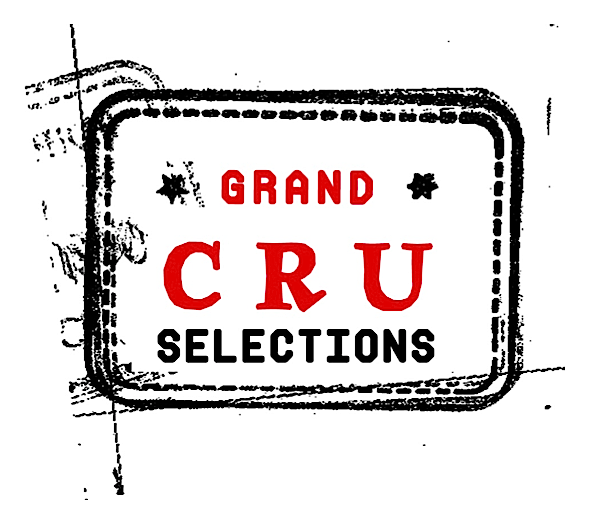Domaine Baravéou
Cadière d’Azur, Bandol, Provence, France
Jean-Philippe Fourney
We first became acquainted with Jean-Philippe Fourney through Marc Bachelet, who encouraged us to discover this small estate from his old wine school classmate in Beaune, who was making a name for himself down in the Bandol appellation. What we found was a man with a clear vision and the conviction to build something from the ground up. Not since the enormous project Jean-Louis Chave initiated in his own St. Joseph vineyards over the last decade, had we witnessed such Herculean efforts necessary to create Domaine Baravéou.
Originally from Burgundy, Jean-Philippe moved south at 19 to work in the vines of several top Provençal estates, including his current position as Chef de Culture at Domaine Tempier. In 2011, he purchased 7.5 hectares on special terroir of limestone over red clay in the town of La Cadière-d'Azur, just within the Bandol AOC. He immediately got to work deforesting, clearing, and rebuilding old terraces creating an amphitheater of vines surrounded by forest facing the Mediterranean. He has replanted 3.5 ha of old selection massale vines, mainly Mourvèdre and Grenache, all by hand, and carefully cultivating his plot bio-dynamically and plowing by horse.
In addition to this plot, he bought a small plot of old vines from neighboring town of Castellet, which allowed him to release his first bottling in 2015. And just like Jean-Philippe, the resulting wines are generous, precise and promised to a great future.
-
Jean-Philippe was born just outside of Dijon but his family were not vignerons. However, from age 12 he began working alongside his godfather in the vines and when the time came, he was motivated to attend wine school in Beaune.
In 2001, at just 19 years old, he obtained the position of Director of Production at Chateau Vannières in La Cadière-d'Azur and moved south to gain work experience with the unique Provencal terroirs at Chateau Vannières. He stayed here for 12 years before landing at Domaine Tempier, where he continues to work today as Chef de Culture. (no small feat considering he’s overseeing the biodynamic cultivation of over 60 hectares of vines).
Despite the demands of his day job he began searching for a property of his own. And, in 2011 he bought 7.5 hectares situated on a unique terroir of limestone/clay to launch his own project - Domaine Baravéau. He immediately got to work deforesting, clearing, and rebuilding old terraces with red clay soils in the town of La Cadière-d'Azur, just within the Bandol AOC, creating an amphitheater of vines surrounded by forest. He has replanted 3.5 ha of old selection massale vines, mainly Mourvèdre and Grenache, all by hand, and carefully cultivating his plot biodynamically and plowing by horse. In addition to this plot, he has 1 ha of 40 year old vines in the neighboring town of Castellet, planted on limestone, marl and sandstone soils.
In 2015 Jean-Philippe released his first vintage from Domaine Baravéou. The name, Baravéou, refers to the rocky outcroppings in Provençal dialect and is both the name of the lieu-dit and the road his property is found.
-
The vines are planted on limestone marl and sandstone soils in Le Castellet (90 m in altitude) and on red clay, dolomites and cargneuls over Triassic limestone in the commune of La Cadiere d’Azur (120 m altitude). The amphitheater is about 2 km from the sea. Domaine Pibarnon is just on the other side of the hill. This proximity is very important in such a dry region, as the humidity of the sea arrives at night and protects the vines during the day from the heat (it’s the opposite situation in Burgundy). In addition, the presence of clay keeps the moisture in the soil.
-
Jean-Phillipe is practicing a comprehensive biodynamic agricultural approach (since 2019). He’s never used any chemical products on this land and only uses a little copper and sulfur when necessary. Everything is horse-plowed (his other passion). Terraces face east so it’s necessary to have good luminosity - this was intentional when planting, as facing south the vines would see too much sun and heat.
-
Grapes are destemmed, vinified with minimal intervention, and aged with maximum patience.
Production on average is 5,000 bottles of rosé and 4,500 bottles of red.
Wines
Bandol Rouge
90% Mourvèdre; 10% Grenache Grapes are completely destemmed, followed by a three week marceration. Aged for 18 months in combination of small 10 hectoliter foudres and 15 hectoliter tuns.
Bandol Rosé
85% Mourvèdre, 15% Grenache Destemmed and direct to press. 18 hour maceration.

